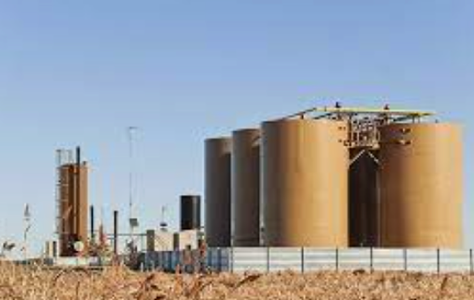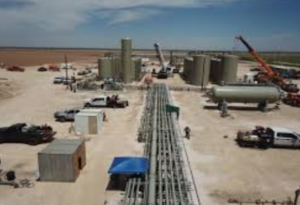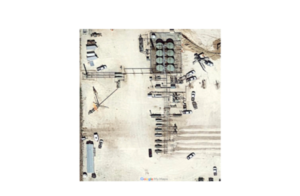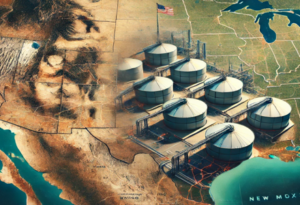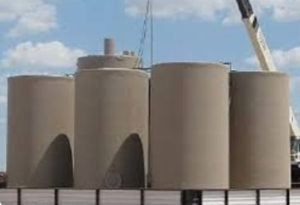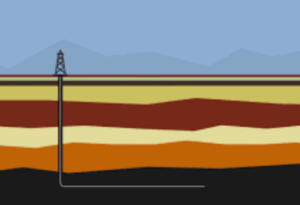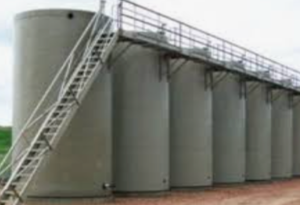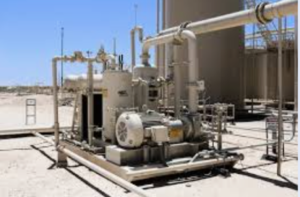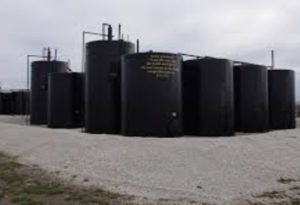EOG Resources’ 1Q 2024 earnings presentation outlines their Package Development strategy within their Delaware Basin Wolfcamp Co-Development Strategy. Key points include:
- Disciplined Co-Development Strategy:
- Package development is guided by a premium hurdle rate.
- Performance is improved through precision targeting and completion design optimization.
- Well costs are lowered through operational efficiencies and longer lateral development.
- Depletion is minimized through package development, with 90%+ of 2024 Wolfcamp packages targeting multiple zones.
- Expertise is applied to shallow zone development for consistent premium returns across stacked pay
EOG Resources’ 1Q 2024 earnings presentation outlines their Package Development strategy within their Delaware Basin Wolfcamp Co-Development Strategy.
Facility Design
Package development in oil and gas operations can significantly impact facility design in several ways. This approach, which involves developing multiple wells or production sites in a coordinated manner, aims to optimize resource extraction and efficiency. Here are the key impacts on facility design:
- Centralized Infrastructure: Package development often leads to the centralization of infrastructure, such as gathering systems, processing facilities, and storage tanks. By grouping wells, the need for separate facilities for each well is reduced, leading to cost savings and operational efficiency.
- Scalability: Facility designs must be scalable to accommodate the potential for additional wells within the package. This means designing facilities that can handle increased production volumes as new wells come online without requiring significant modifications.
- Efficiency in Resource Utilization: Shared facilities allow for more efficient use of resources, such as water, power, and transportation. For example, a centralized water handling system can serve multiple wells, reducing the need for individual water treatment and storage facilities.
- Reduction in Footprint: By consolidating infrastructure, the overall environmental footprint of the development can be minimized. This is particularly important in sensitive or regulated areas where minimizing land disturbance and environmental impact is critical.
- Enhanced Logistics and Operations: Package development facilitates streamlined logistics and operational workflows. Centralized facilities enable more efficient transportation of materials and personnel, as well as easier maintenance and monitoring of equipment.
- Integrated Safety Systems: Safety systems can be more effectively integrated and managed across a centralized facility. This includes emergency response plans, fire suppression systems, and monitoring of hazardous conditions, which can be more robust and comprehensive when designed for a package development.
- Cost Savings: By reducing duplication of facilities and infrastructure, package development can lead to significant cost savings in both capital expenditures (CAPEX) and operating expenses (OPEX). Shared infrastructure reduces the need for redundant equipment and facilities, leading to more economical project execution.
- Optimization of Production: Coordinated development allows for the optimization of production strategies, such as the use of enhanced recovery techniques or pressure maintenance programs that benefit from a collective approach rather than individual well interventions.
Overall, package development leads to more strategic and efficient facility design, resulting in operational, environmental, and economic benefits for oil and gas projects.
Tank Selection
Centralized oil and gas infrastructure significantly impacts tank selection in several ways. Here are some key considerations:
- Capacity Requirements:
- Centralized infrastructure typically requires larger storage tanks because they must accommodate production from multiple wells. This consolidation leads to a need for higher-capacity tanks to efficiently handle the aggregated output.
- Type of Tanks:
- Depending on the centralized facility’s function, different types of tanks may be required. For instance, large storage tanks for crude oil, separate tanks for produced water, and specialized tanks for chemicals used in the production process might be needed.
- Material and Design:
- Tanks must be constructed from materials compatible with the stored fluids. For centralized facilities, this often means selecting materials that can handle a wide range of conditions and contaminants. The design must also meet the pressure and temperature requirements of aggregated production.
- Safety and Environmental Considerations:
- Centralized storage increases the potential risk in case of tank failure. Therefore, tanks must adhere to stringent safety standards and include features such as secondary containment systems, leak detection, and fire suppression systems to mitigate risks.
- Operational Efficiency:
- Larger centralized tanks can improve operational efficiency by reducing the frequency of transportation and handling operations. This can lead to reduced operational costs and increased safety.
- Flexibility and Scalability:
- Tanks in centralized facilities must be flexible to accommodate varying production rates and scalable to allow for future expansion. This means designing tanks that can be easily upgraded or expanded to handle increased production volumes.
- Regulatory Compliance:
- Centralized storage facilities must comply with local, state, and federal regulations regarding tank design, installation, and operation. This includes regulations related to environmental protection, safety standards, and emissions control.
- Integration with Other Systems:
- Tanks must be integrated with other infrastructure components such as pipelines, separators, and processing units. This ensures smooth and efficient transfer of fluids between different stages of production and processing.
- Economic Considerations:
- Centralized tank selection must balance the initial capital expenditure with long-term operational costs. While larger, more sophisticated tanks may require higher upfront investment, they can offer cost savings in terms of maintenance, operational efficiency, and compliance over time.
In summary, centralized oil and gas infrastructure demands careful consideration in tank selection to ensure adequate capacity, safety, regulatory compliance, operational efficiency, and scalability. These factors collectively contribute to the effective and sustainable management of aggregated production from multiple wells.

